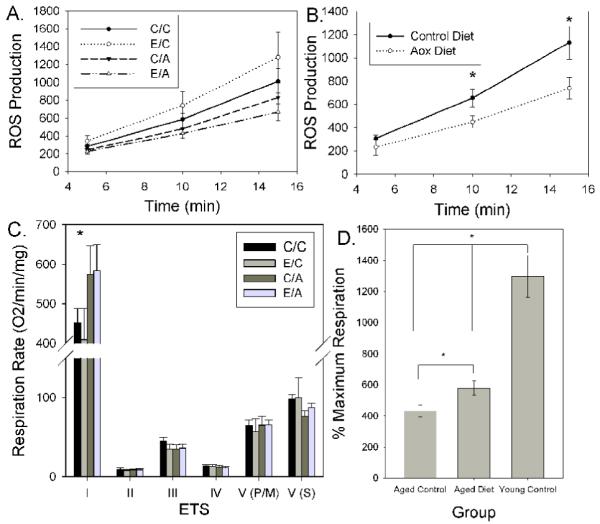Figure 2.

Mitochondrial dysfunction in aged dogs can be reduced with an antioxidant enriched diet. A. ROS production by mitochondria of aged dogs was reduced with treatment with either an antioxidant diet alone or with a combination of an antioxidant diet with behavioral enrichment. B. Reduced ROS production was selectively due to aged animals fed an antioxidant enriched diet. C. Respiration rates were significantly improved in the two treatment groups that received the antioxidant enriched diet in contrast to little change in complex II, III, IV and complex V respiration in the presence of the mitochondrial uncoupler FCCP and pyruvate/malate (V(P/M)) or following the addition of rotenone and succinate treatment (V(S)). * p<.05. D. For comparison, the % maximum respiration (state V/state IV) associated with NADH substrates shows that treated aged animals were significantly improved relative to untreated controls (p<.05) but not to the extent of untreated young dog levels. Bars represent group means, error bars represent standard error of the mean. In D, lines represent group differences. C/C - control environment/control diet, E/C - enriched environment/control diet; C/A - control environment/antioxidant diet; E/A - enriched environment/antioxidant diet.
